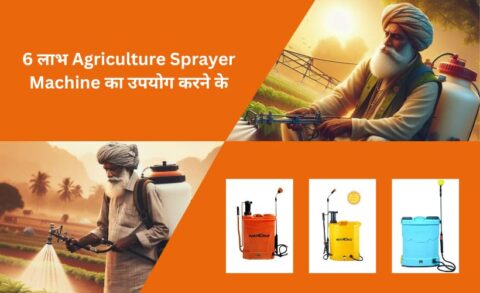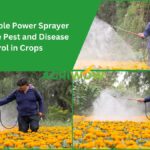Agricultural spraying machines are essential tools for modern farming. They help farmers apply pesticides, herbicides, fungicides, and fertilizers efficiently, ensuring healthier crops, higher yields, and better protection against pests and diseases. Choosing the right spraying machine for agriculture can make a big difference in productivity and sustainability.
What Is an Agricultural Spraying Machine?
An agricultural spraying machine, commonly known as a sprayer, is designed to atomize and evenly distribute liquid substances over crops or orchards. Its main purpose is to deliver precise coverage while reducing waste and minimizing environmental impact. These machines range from simple handheld models to advanced self-propelled systems.
Types of Agricultural Spraying Machines
Choosing the right sprayer depends on farm size, crop type, and application needs. Here are the most common types:
1. Knapsack Sprayers
Portable units carried on the operator’s back. Ideal for small farms, gardens, or spot treatments. Available in manual (pump-operated) or battery-powered versions.
2. Tractor-Mounted Sprayers
Mounted on a tractor’s three-point hitch, these sprayers include a tank, pump, and boom system. They are versatile and widely used on medium-to-large farms for efficient field coverage.
3. Trailer-Type (Trailed) Sprayers
Larger sprayers towed behind a tractor. With bigger tanks and wider booms, they are perfect for large-scale operations where speed and high capacity are critical.
4. Self-Propelled Sprayers
Independent machines with their own engines and high ground clearance. They are especially effective for tall crops like corn and cotton, offering features like GPS guidance and automatic boom height control.
5. Aerial Sprayers
Planes or drones equipped with spraying systems. They cover vast areas quickly and are useful in hard-to-reach terrains. Drones, in particular, provide precise, targeted spraying and are growing in popularity.
Key Benefits of Using Agricultural Sprayers
- Efficiency: Quick and uniform application reduces time and labor costs.
- Enhanced Crop Health: Ensures plants receive the right amount of nutrients and protection.
- Higher Yields: Healthy crops lead to better productivity and profitability.
- Reduced Waste: Modern designs minimize overspray and chemical drift.
- Improved Safety: Reduces direct exposure of operators to chemicals.
9 Top Tips for Operating an Agricultural Spray Machine
- Read the Manual: Always follow manufacturer instructions for operation and maintenance.
- Wear PPE: Use gloves, goggles, respirators, and protective clothing every time you spray.
- Calibrate the Sprayer: Ensure correct application rates by checking nozzle flow, pressure, and speed.
- Choose the Right Nozzles: Flat-fan for herbicides, cone nozzles for fungicides and insecticides.
- Check Weather Conditions: Avoid spraying in windy or extremely hot conditions.
- Maintain Regularly: Clean tanks, lines, and nozzles after use; inspect for leaks and worn parts.
- Mix Chemicals Properly: Follow label instructions for correct concentrations.
- Maintain Consistent Speed: Prevents uneven application across the field.
- Store Chemicals Safely: Keep leftover chemicals in secure, ventilated areas and dispose of containers responsibly.
Final Thoughts
From knapsack sprayers for small farms to advanced aerial drones for large-scale fields, every sprayer agriculture machine plays a vital role in crop protection. By maintaining and operating a sprayer machine for agriculture properly, farmers can achieve better yields, improved efficiency, and long-term sustainability.
FAQ
Q1: How do I choose the right spraying machine for agriculture for my farm size and crop type?
Answer:
- Assess the size of your fields. Small farms may benefit from knapsack or trailer sprayers, while large farms may need self-propelled or aerial sprayers.
- Consider the crop height and row spacing, because these will affect boom height and nozzle choices.
- Think about terrain, accessibility, and how much maintenance you can manage.
- Check for features like GPS guidance, automatic boom height adjustment, and drift control.
- Always calibrate the machine to match flow rate, speed, and chemical requirements.
Q2: What maintenance practices are essential for a sprayer agriculture machine to ensure longevity and efficiency?
Answer:
- Clean tanks, nozzles, hoses, and filters after each use to avoid clogging and residue buildup.
- Regularly inspect hoses and seals for leaks, cracks, or wear.
- Calibrate nozzles and verify correct pressure and flow rate.
- Store in a dry, sheltered area; if winterizing, drain fluids or use antifreeze where needed.
- Replace worn nozzles or tips, as performance drops significantly with even slight wear.
Q3: What safety precautions should I follow when operating a sprayer machine for agriculture to protect myself and the environment?
Answer:
- Always wear proper PPE: gloves, goggles, long sleeves, respirator/mask if needed, etc.
- Avoid spraying in windy conditions to reduce drift and potential contamination of nearby crops, water sources or dwellings.
- Read and follow the chemical label instructions (dose, mixing, re-entry intervals).
- Calibrate and test the equipment before use to ensure correct application rate.
- Properly dispose of leftover chemicals and empty containers following local regulations, and rinse equipment thoroughly.










